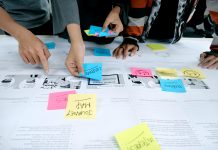
On the surface, onboarding is seen as a process to ensure newly hired team members are equipped with the tools and resources to be productive in their new roles. The success of this type of onboarding is measured by the time it takes for new employees to reach productivity, a key indicator of organizational efficiency.
At its heart, onboarding is a strategic element of the employee experience that has far‐reaching effects on fostering long‐term engagement and retention when designed intentionally to drive connection with peers and managers, increase the employee’s sense of belonging, and immerse them in the company’s culture.
Modern HR teams measure not only time to productivity but also employee satisfaction, sense of belonging, emotional safety, and the quality of the employee-manager relationship. Numerous industry analysts have reported that a modern, intentionally designed, and technology-enabled onboarding experience is integral to employee retention.
Onboarding: Setting the Foundation for Retention
The onboarding experience is a critical touchpoint that sets the tone for an employee’s journey with an organization. It’s the first impression, the initial immersion into the company culture, and the foundation for future success. Traditional onboarding processes often focus on administrative tasks—filling out forms, setting up IT credentials, and reviewing company policies. While these elements are necessary, they fail to address the deeper needs of new employees: clarity, connection, and development.
The modern onboarding experience helps ensure that employees not only complete necessary procedures but also feel welcomed, empowered, and integrated.
A holistic onboarding strategy should feature the following:
- Clarity and Structure: A well-defined onboarding plan provides new hires with a clear roadmap that outlines expectations, key milestones, and available resources. This eliminates confusion and empowers employees to take ownership of their onboarding journey.
- Cross-Functional Support System: A coordinated effort between HR, IT, direct managers, and colleagues during onboarding ensures a smooth and comprehensive integration for the new employee. HR handles administrative tasks, benefits, and company policies, while IT sets up the necessary tools and access. Direct managers provide role-specific guidance and expectations, and colleagues help build connections and foster a welcoming environment. This collaborative approach helps new hires feel supported, engaged, and equipped to succeed from the very beginning.
- Role-Specific Learning Journeys: New hires should receive consistent training on the company’s mission, vision, values, and culture across teams and roles. They also need role-specific training focused on product knowledge and compliance requirements. Role-learning experiences help employees acquire the specific knowledge and skills they need to excel in their positions while reducing the learning curve and jumpstarting their confidence and productivity.
- Connectedness: Impactful onboarding experiences help employees feel more connected to their direct team, connect with peers across the organization, and fast-track emotional and cognitive trust. There are several ways to implement connectedness, including social experiences during onboarding and buddy programs, which are two proven methods.
Modern, holistic onboarding strategies are, effectively, an investment in employee development. According to a Gallup study, organizations that invest in employee development are twice as likely to retain their employees. They also report 11% greater profitability.
How Technology Enhances Onboarding Experiences
Technology has transformed the onboarding landscape, making it more engaging, effective, and scalable. Digital onboarding platforms streamline the onboarding process by automating administrative tasks, providing easy access to essential information, and allowing new hires to progress at their own pace. Perhaps more importantly, these platforms facilitate intentional relationship-building with other employees, effective and timely involvement of the managers, and insights for HR and L&D teams.
Digital onboarding platforms ensure that all employees, regardless of location, receive a cohesive and consistent introduction to their organization. Here’s an overview of what digital onboarding tools provide:
- Consistency and Flexibility: New hires can access resources on demand, interact with onboarding content from anywhere, and complete self-paced or cohort-based training modules. In addition to providing a centralized repository for all onboarding materials, organizations can effectively and efficiently tailor the onboarding experience to each employee’s role and needs, allowing the HR and L&D teams responsible for building these experiences to do so.
- Enhanced Engagement: Organizations can deliver engaging training modules that incorporate practice and project work into their diverse content sources, aligning directly with work outcomes. Organizations can include direct manager feedback on new hires’ work outcomes during the onboarding program in an efficient and trackable manner. These types of onboarding experiences are critical for remote and hybrid employees, as they enhance the experience of both employees and leaders when used to augment and enable in-person onboarding.
- Data-Driven Insights: Digital onboarding platforms feature built-in analytics tools that enable companies to continually improve their processes. These tools can track completion rates and engagement with various learning activities, as well as new hires’ performance, and collate feedback from new hires, allowing organizations to make data-driven decisions to enhance their onboarding strategies.
These features help create a structured, engaging, and efficient onboarding process that accelerates the integration of new employees. This reduces the time it takes to reach full competency, ultimately boosting organizational performance.
The Power of Buddy Programs
While technology streamlines the onboarding process, human connection remains crucial. Employees may possess the technical skills required for their roles, but without strong interpersonal connections, they may struggle to integrate effectively into the company. Buddy programs provide new hires with a dedicated point of contact for questions about work processes, offering guidance, support, and a friendly face as they become acclimated to the organizational culture and its nuances.
After piloting a buddy program involving 600 employees across the organization, Microsoft found knowledgeable onboarding buddies provide invaluable context that new hires simply won’t find in the employee handbook. They help newcomers understand the intricacies of their roles, identify whom they should build relationships with, and navigate the organization’s cultural norms and unwritten rules. This guidance facilitates a more effective integration into the organization and a better understanding of how to contribute to the team’s success.
Microsoft found that the frequency of meetings with onboarding buddies correlates with increased productivity among new hires. More importantly, those assigned buddies were 36% more satisfied with their onboarding experience after their first 90 days on the job. This study demonstrates how buddy programs can provide socialization and support, positively impacting employees’ early performance and long-term retention.
Final Words
Modern onboarding experiences drive talent retention by providing new hires with a positive, engaging, and supportive introduction to the organization. This strong start fosters higher job satisfaction, increased engagement, and a stronger sense of belonging, ultimately reducing turnover and enhancing long-term organizational commitment.
In an era where talent retention is as crucial as talent acquisition, organizations that invest in comprehensive onboarding strategies will gain a competitive advantage—building teams that are not only skilled but also deeply committed to their company’s mission and culture. However, be cautious not to overcomplicate things. Ultimately, a strong and supportive environment is at the core of work environments where employees feel valued, supported, and empowered to reach their full potential.



